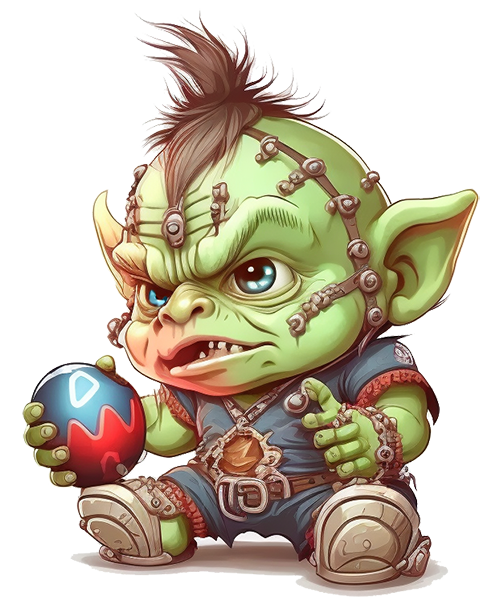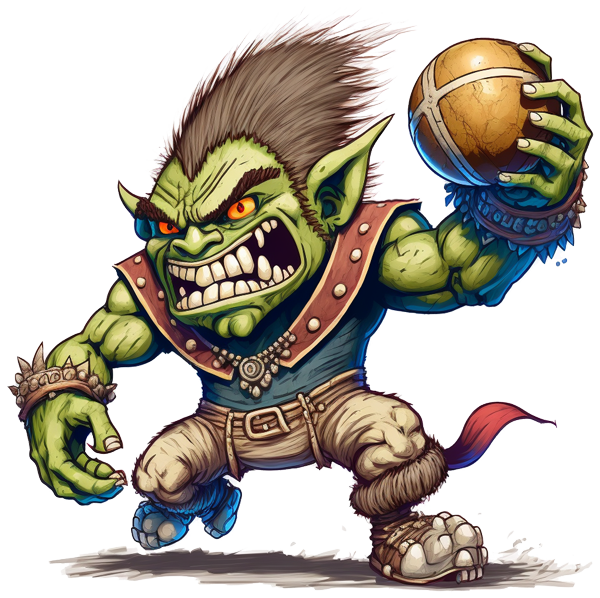New to Blood Bowl? Brilliant! Welcome aboard! On this page you will find some answers to the most commonly asked questions.

The rules
The rules of Blood Bowl are fundamentally the same as all editions since 1993 – if you have played with block dice, you have played basically the current game. The latest ruleset was released by Games Workshop in November 2020. Games Workshop call this Blood Bowl: Second Season, although the community will often refer to it as BB2020. The Second Season bundle comprised two teams, Imperial Nobility and Black Orcs, along with a pitch, rulebook, star players and referee models. If you just want to buy the rulebook, it is available to buy separately.
Twice a year, in May and November, Games Workshop will publish the Errata and Designer’s Commentary (commonly known as FAQ) . This will clarify some rules and will occasionally make changes to balance the game. It is recommended reading this in addition to the rulebook.
When the Second Season was released, there was a Teams of Legend document released at the same time to cover a number of teams that had been present in previous editions but weren’t in the rulebook due to the rosters needing updating and/or there being no models currently available for them. Some of these have been surpassed by later releases, but the rules for Chaos Dwarfs, High Elfs and Tomb Kings are still only found within this document.
Since the boxset release, there have been several new or revamped teams released. The basic rules are in the box with the models or the Spike! Magazine which was issued at the time of their release. The Spike! magazine will also contain articles on the team, star players and tactics. These teams are Khorne (Spike! issue 13), Norse (Spike! issue 14), Amazons (Spike! Issue 15), Vampires (Spike! issue 16) and Gnomes (Spike! issue 17).
What you will need
To play the game you will need a pitch, some Blood Bowl specific dice, some tokens and some models to represent your team. Many players use the Games Workshop models for Blood Bowl teams, although some will use other Games Workshop models converted to represent their team, and some will use teams made by third party miniature companies. Most people are happy to play against all of these teams, although sometimes you may have to use the official Games Workshop models – for example if you are playing in one of their stores. The standard size for bases is 32mm, with big players such as ogres often on 40mm bases, and small players such as snotlings on 25mm bases.
The most important thing is that it is clear to your opponent which model represents which player on your roster, and which additional skills they may have acquired. There are a few conventions, including base colours and skill bands to represent the acquired skills. Another standard convention is to turn your models around after each player has activated to keep track and ensure you don’t try to use the same player twice in one turn.
Learning the basics
If you would like a quick run through of the basics of Blood Bowl, try this video recorded by former NAF president sann0638. If you’re interested in delving further, there are many more other videos on his YouTube channel which help explain more concepts, such as assisting in a block.

Formats of Blood Bowl
Blood Bowl is played primarily in three different formats – exhibition, league and tournament.
An exhibition game is playing against someone else under some predetermined rules, although these can be as strict or loose as you wish them to be.
There are many Blood Bowl leagues across the world. We have a League Locator so that you can hopefully find one near to you. In a league, you usually start with a set amount of gold to buy your team, with the players levelling up and gaining new skills as the season progresses depending on how well they do. Some of them may pick up injuries or even die. Playing in a league has a story element to it with these lasting effects.
Tournaments are usually 1 day events (although are often 2 days and very occasionally 3 days) where a number of coaches will play . We have a guide to attending tournaments which will give you an idea of what to expect. They are usually in what is called a resurrection format – meaning that your team will resurrect to the exact same state at the start of every game. Often you have more gold to buy your team than in a league and are able to allocate additional skills to a number of players. Tournaments are usually done in what is called the Swiss format where the first round is drawn randomly but after that you should play someone relatively close to you in the rankings. You can search for tournaments near to you on this page.
Resources
When you start to get into the game you will be wanting to think about tactics, including which skills to take when, and how to play with particular races. This page has links to a number of resources. Many will refer to the commonly used rules before BB2020, though the fundamental tactics will stay the same.
Online Blood Bowl
If you are not able to play in person, or you are just keen for more action, there is a series of official video games published by Cyanide, with the latest being Blood Bowl 3. There is also a community created version of the game called FUMMBL which is widely popular. The NAF even run online tournaments on both of these platforms.
You will also be able to find a number of people streaming Blood Bowl on various platforms, with Twitch being one of the most popular.
Further information
If you have any questions or want to talk about Blood Bowl, join us on The NAF Discord, check out the Facebook Blood Bowl Community group or one of the forums which are linked here. For specific NAF questions, contact any of the NAF representatives.
There’s then a whole selection of other other stuff on here – Podcasts, Playbooks and Tutorials, Fan material, Roster tools, and all the news on the right hand side.
Finally, enjoy! Blood Bowl is a brilliant game which has got many many of us addicted. The community is brilliant and welcoming to newcomers. I hope you enjoy your time playing the game.